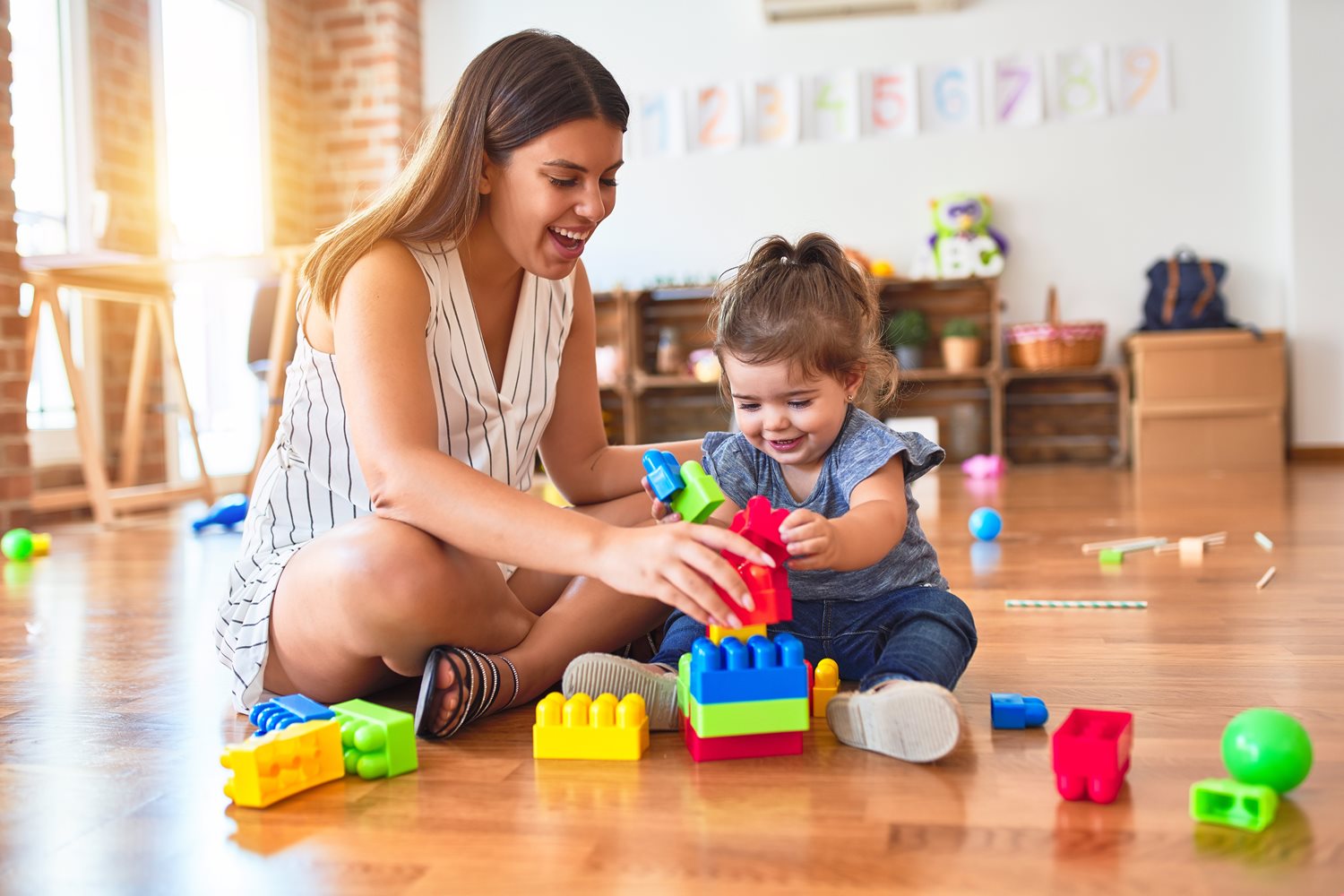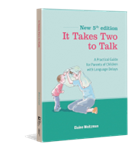How to Build a Strong Foundation for Your Child's Language Skills

When a new home is under construction, the work begins with pouring a foundation. It’s not until the end of the project that the more noticeable finishes are installed, like the countertops, light fixtures, flooring, and paint. These final additions are what we notice once the house is built, and we rarely think about the concrete foundation upon which the house is standing. However, that sturdy base is essential, and without it, the other parts of the house can’t be installed.
The same thing is true when it comes to building your child’s early language skills – your child needs a solid foundation upon which his later language skills can grow and develop. These later language skills are the gestures, words or sentences your child will eventually learn to send you messages. The foundation supporting those skills though, is his ability to interact with you during your everyday activities by taking back-and-forth turns with you. Your child needs to know how back-and-forth interactions work in order to learn to send messages and keep a conversation going. Once a child has this foundation, his other language skills can keep layering on top of this sturdy base.
Build your child’s foundation by being responsive
You can build a strong language foundation for your child by being a responsive communication partner for him. Being responsive means that you encourage him to communicate with you so you can respond. You do this by not talking too much so you can notice what he does and says, and then respond by talking about whatever’s caught his interest at that moment. In this way, your child learns that you are interested in what he’s communicating, and it encourages him to keep interacting and communicating with you. The more opportunities your child has to take turns with you and send you messages, the more chances he has to practice communicating. These back-and-forth interactions are like little conversations, and they build a strong foundation for communication.
Being responsive means:
- Being Face-to-Face – you need to be face-to-face and down at your child’s physical level to see and hear exactly what he is doing or saying. This is particularly important for children with delayed language development who may send very subtle messages. Being face-to-face also lets your child know that you are interested and ready to receive his message and interact with him.
- Observing, Waiting, and Listening – once you are face-to-face, you can observe what your child does and listen to him carefully. When you pause and wait for a few seconds while looking at your child without talking, it gives your child a hint that he can start an interaction with you by sending you a message. When he does, you’ll be ready to respond by saying something that matches his interest at the moment. Then the interaction can keep going, back and forth.
- Following your child’s lead– this means staying focussed on your child’s interests and responding to him in ways that keep the interaction going back and forth, giving your child many opportunities to communicate. There are many ways to respond to your child’s message. You can:
- imitate his sounds and actions
- make a comment that describes what he’s doing or what you think he’s trying to tell you
- join in and play with him, staying focussed on what he’s doing and what he’s interested in
Being a responsive partner for your child builds his communication foundation. The more opportunities he has to communicate during these back-and-forth interactions with you, the more he will build a strong base and learn how to send messages to you. He will also learn how to receive messages from you, and to expect that conversations will keep going for several turns as you play and interact together. Eventually, upon this solid foundation, your child will have the opportunity to add new communication skills, such as gestures, sounds, or words. This is the way language learning always works – first by learning how to interact with caregivers, and then later, by sending more specific messages (like words).
Your child’s language foundation is the key to his success as a communicator. It’s upon these back-and-forth interactions that the rest of his language skills are built. It takes young children some practice to learn about these back-and-forth interactions, but if you are a responsive partner, you’re giving your child the chance to develop a strong foundation for his communication skills.

It Takes Two to Talk® guidebook
The It Takes Two to Talk guidebook provides research-based strategies to build your child’s language skills during enjoyable everyday interactions and activities. Lots of illustrated examples and checklists help you better understand your child’s stage of communication and the best ways to help them learn.
